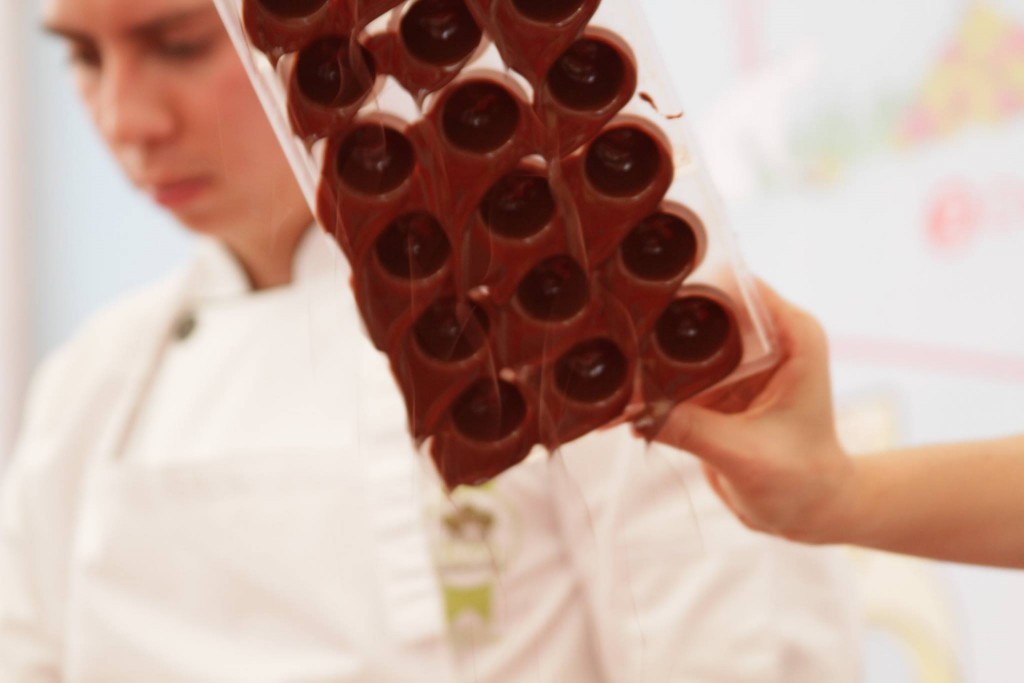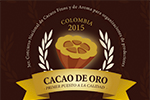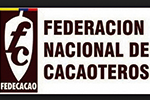
On September 18th, Swisscontact, a corporation working in economic development, held their third Casa de Chocolate and Cacao de Oro Awards, showcasing and celebrating the exciting expansion of high quality Colombian cacao. Canopy Bridge founder Marta Echavarría participated in this event, which came at a pivotal time for Colombia’s future. In the same week, the Colombian government and the Revolutionary Armed Forces of Colombia (FARC) reached new peace accords, giving rise to hopes for a peaceful, productive future. Fittingly, the coinciding fair of Colombian cacao presented a viable means for achieving and maintaining this sought after stability. In Colombia at the time, Marta had her eyes on just that prize….literally.
This year’s “Cacao de Oro” gold, silver and bronze award winners (“Asociación Guardabosques de la Sierra” from Santa Marta, Magdalena; “CORPORTEVA” from Tumaco, Nariño; and “ASOBOSQUES” from Bagre, Antioquia, respectively), along with the many other producers and buyers present, not only represent the future of Colombian cacao, but of the nation itself as it seeks to flush its iconic, forested hills of coca. Originally from Colombia, Marta visited her homeland while accompanying Maya Granit of Uncommon Cocoa, a U.S. Cocoa Sourcer, who was beginning her search for environmentally and socially responsible beans in Colombia. Fulfilling Canopy Bridge’s mission to promote sustainable development by facilitating trade with similarly motivated producers and buyers, Marta had clearly come to the right place, at the right time.
Marta shares her reflections on the Casa and the future of Colombian cacao below:
On the recent signing of peace accords in Colombia, and the role of cacao in that process
“Colombia has traditionally been a cacao producer only for the local market, and we have a very high consumption of cacao, but efforts by the UN and other organizations, in this case Swisscontact, have helped to improve quality and marketing overseas. We’re seeing an important increase in production this year, where it’s going to reach around 65,000 tons as opposed to about 48,000 tons in 2014. A lot of the rural areas that produce cacao have been where the conflict has been the most extreme, and cacao could be a good option for their livelihoods because of the current high price.”
On the challenges facing Colombia as it looks to take its place in the cacao market
“One issue will be that some of the varieties and the preparation processes are still not up to the standards of a higher quality cacao market, but are more fit for a mass market. However, there seems to be more demand than supply for quality cacao, so Colombia seems to have a lot of potential to grow into that market in the coming years. It also provides an opportunity for producers to profit from higher prices, and this Casa was part of the process of differentiating their product.
While they still struggle with the question of whether to go for a mass market or a specialty market, this particular business fair was focused on high quality buyers. Small buyers, but high quality buyers. For example, we were able to accompany Uncommon Cocoa, an importer that is becoming established in the US. They have been working in Belize and Guatemala, and now are interested in exploring markets in Colombia, Ecuador, and Peru, and we’ve been able to help them in that search. There were also buyers from Belgium, Austria and other European nations. So it´s a niche market, but according to Maya (of Uncommon Cocoa) they have buyers waiting.
On where an interested buyer should head for Colombian Cocoa:
Santander is the region with the largest production, but it is also utilizing the most hybrids like CCN-51 and other varieties that are less attractive due to their taste profile, so it will be interesting to see how their production evolves over time.
Swisscontact is offering support through its network “Red Cacaotera” and there’s also the National Federation of Cacao Producers, who offer exportation services. These are good places to start, but from there you have to go in and find out what the production conditions are.
Canopy Bridge is interested in showing the producers that have a social and environmental mandate. That is where we can offer support to whoever is looking for those cacaos, and not only in Colombia, but also in Ecuador and Peru, which are definitely positioning themselves as good producers. There is a growing production of organic and fair trade certified cacao in smaller volumes in Central America and in Mexico, so Latin America has a great opportunity to participate in these specialty markets, especially in the United States.
On social and environmental responsibility in Colombian cacao:
The good news is that the average size of the farms in Colombia is 3.5 hectares, so we are talking about small producers. Ideally, producing for these niche markets sustainably ensures that the benefits reach these families directly. I think that, in this way, cacao is a very socially responsible product due to the scale of the industry. The efforts of the government should be to organize the communities and bring them together.
In the case of Colombia, you have the additional situation that the Federation is very inspired by what has happened in coffee, and they have a long history of organizing and providing services to the communities, which is now happening in the case of cacao as well. However, it’s very different to provide to a mass market versus to a specialty market, and I think that is where they are going to have to find their way and promote their origins, the type of cacao, and the name of the country. But, I think that, keeping in mind the peace process and the fact that this can be an alternative source of income in poverty stricken areas, this can be an interesting card to play.
Check out other great chocolate producers at Canopy Bridge.
Photo courtesy of Casa de Chocolate Bogotá 2015.
Cacao de Oro
Bogotá, Colombia
Fed. Nacional de Cacaoteros
Colombia, South America
[clear]





